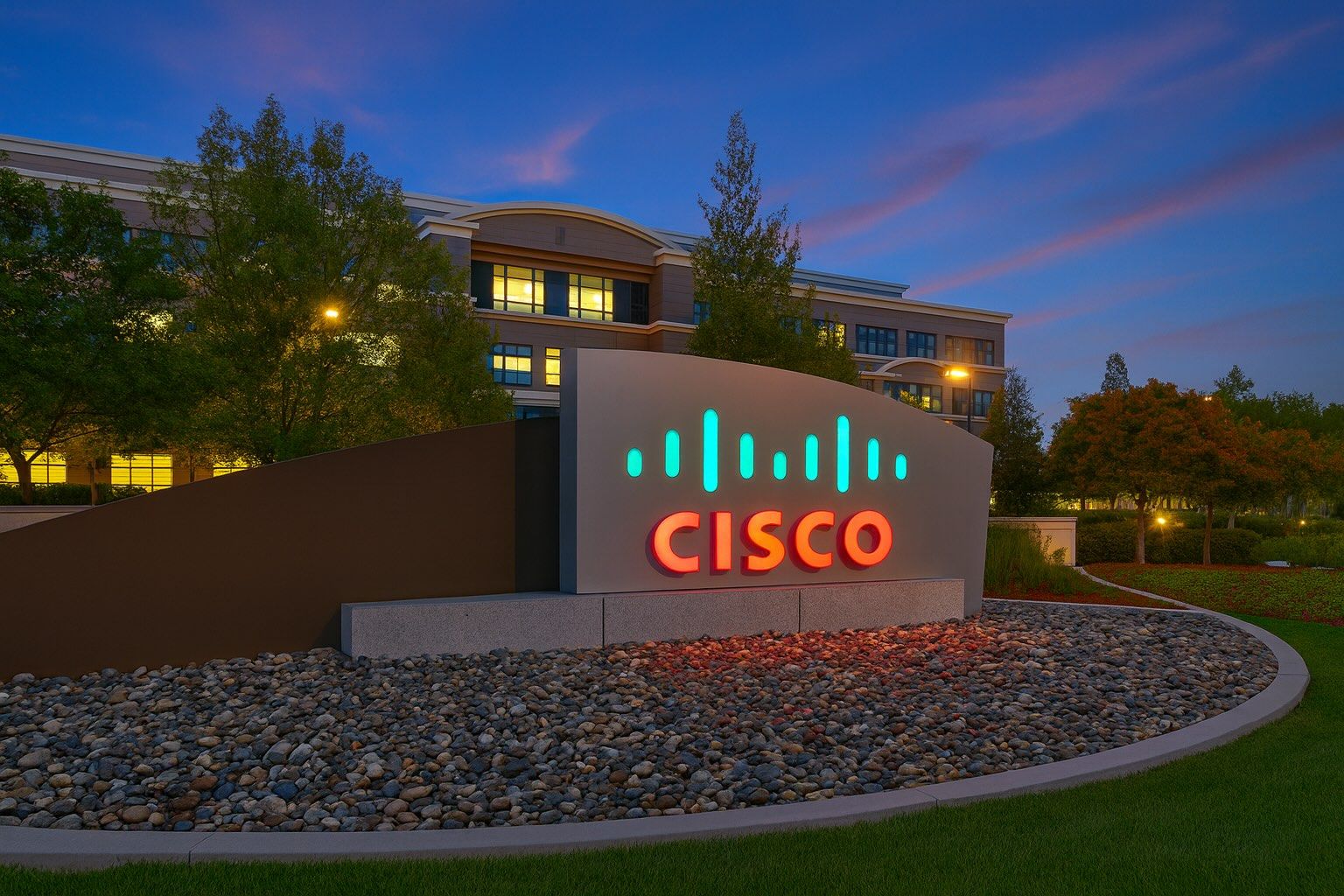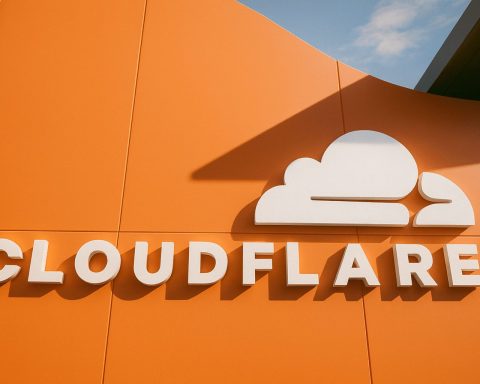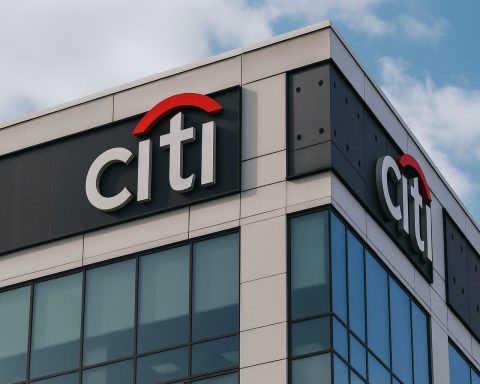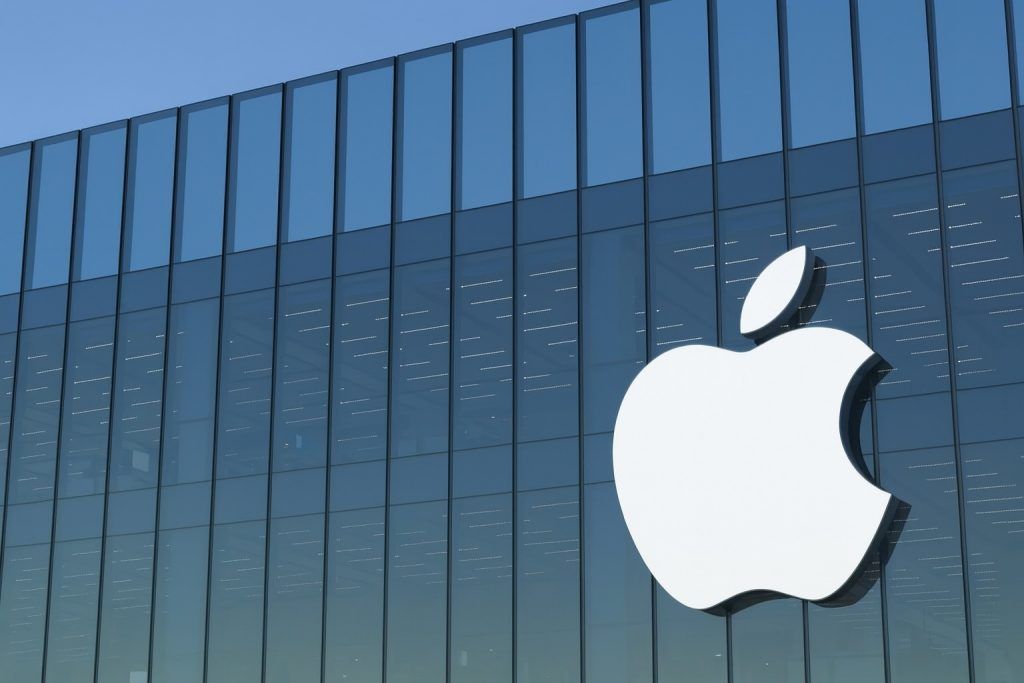- Global Networking Leader: Cisco Systems is a global leader in networking and communications technology, with a diversified portfolio spanning networking hardware, security, collaboration (Webex), observability (analytics), and a robust services business [1] [2]. It sells both products and recurring support services to enterprises, governments, and service providers worldwide [3].
- Strong Financials & Shareholder Returns: Cisco’s trailing 12-month revenue is $56.65 billion with net income of $10.45 billion [4]. The stock (NASDAQ: CSCO) trades around $69 per share (Oct 8, 2025), near its 52-week high, with a price-to-earnings ratio ~26–27x and a dividend yield of roughly 2.4% [5]. Fiscal 2025 saw 5% revenue growth (to $56.7B) and Cisco raised its quarterly dividend to $0.41 (annual $1.64) for a 2.4% yield [6] [7].
- Latest News – AI Chip & Major Orders: On Oct 8, 2025, Cisco unveiled a 51.2 Tbps router and new “Silicon One P200” chip aimed at connecting AI data centers, with Microsoft and Alibaba as initial customers [8]. This comes as demand from cloud giants drove Cisco’s AI-focused orders above $2 billion in FY2025, more than double its original target [9] [10]. CEO Chuck Robbins stated Cisco will be a “core systems provider” for large AI training clusters going forward [11].
- Analyst Sentiment – Moderate Buy: Wall Street analysts have a “Moderate Buy” consensus on CSCO. There are ~15 Buy or Strong Buy ratings vs ~10 Holds, and the average 12-month price target is about $74–75 (≈8% upside) [12] [13]. Notably, Bank of America recently raised its target to $85 (bullish on Cisco’s AI and subscription momentum) [14]. Technical indicators are also favorable – Cisco trades above its key moving averages (e.g. 100-day EMA ~$66 [15]) and recent chart signals are strongly bullish(multiple buy signals, no major sell flags) [16].
- Growth Drivers and Outlook: Cisco is benefiting from a network upgrade cycle (e.g. new 800G switches, Wi-Fi 7, Silicon One-powered Catalyst routers) and a surge in AI infrastructure spending by cloud providers. In Q4 FY25, product revenue jumped 10% (networking +12% YoY) while service provider & cloud orders surged 49%YoY [17] [18]. The company issued upbeat guidance for FY2026 (revenue ~$59–60B, EPS ~$4.00) on the back of these tailwinds [19]. However, management and analysts caution that hardware sales growth may moderate as Cisco transitions to more software/subscription revenue, and economic or supply-chain headwinds (and softer public sector demand) could pose near-term challenges [20].
- Competitive Landscape: Cisco faces rising competition in its core markets. Arista Networks (high-growth data center switching specialist) has dramatically outpaced Cisco in stock performance (540% vs 50% gain over five years) [21] by capturing hyperscaler customers, leveraging an open, cloud-centric model [22] [23]. Still, Cisco remains the one-stop-shop “end-to-end” provider for campus, WAN, data center, security, and collaboration needs [24] – a breadth Arista hasn’t matched. Juniper Networks(recently about 7% global share vs Cisco’s ~77% in networking hardware [25] [26]) competes in routers and software-defined networking, and is now backed by HPE’s ecosystem (following a strategic $14B merger announcement) to bolster its enterprise reach [27]. Huawei Technologies, a private Chinese rival, remains a formidable player globally – often trading the #1 spot with Cisco in telecom gear – but its presence in Western markets is limited by sanctions. (Notably, Huawei outperformed Cisco in high-end router sales in early 2025, as that segment grew 10% YoY [28].) Despite these rivals, Cisco’s market share and entrenched customer base underscore its strong competitive position, even as it navigates a more crowded landscape.
Cisco’s Business Model & Market Position
Cisco Systems is best known as the world’s largest vendor of networking hardware and software, powering much of the internet’s infrastructure. The company’s business model centers on selling network equipment (like routers, switches, and wireless access points), along with security solutions, collaboration tools (e.g. Webex conferencing gear/software), and observability software (monitoring and analytics, bolstered by its 2024 acquisition of Splunk). In addition, Cisco provides a range of services – from technical support and maintenance contracts to cloud-managed software subscriptions.
Cisco generates revenue both through direct sales and via a global channel of resellers and distributors, ensuring its products reach enterprises of all sizes and governments worldwide [29]. This mix of one-time product sales and recurring service or subscription fees has made Cisco’s cash flows quite robust. Geographically, the Americas (especially the U.S.) contribute the majority of revenue (~60% [30]), with EMEA and Asia-Pacific regions also significant.
Crucially, Cisco’s broad portfolio creates a “full stack” ecosystem that tends to lock-in customers. For example, a corporation might use Cisco’s campus switches and Wi-Fi, connect branches via Cisco routers, secure the network with Cisco firewalls/Zero Trust software, and enable collaboration through Cisco Webex – all managed under Cisco’s software dashboards. This end-to-end approach, plus proprietary innovations like custom Silicon One chips, has historically given Cisco an edge in large enterprise and service-provider deals [31]. As one industry comparison noted, “Cisco is a one-stop shop” with an integrated platform, whereas a challenger like Arista “mainly provides a narrower range” of cloud/data-center products [32] [33].
That said, Cisco’s dominance has been gradually challenged. Arista Networks, in particular, carved out a lucrative niche supplying high-performance cloud data center switches (often using Broadcom silicon and an open software approach). Arista’s appeal to hyperscalers – some of whom dislike being tied to Cisco’s proprietary systems – helped it grow revenue at ~24% CAGR from 2019–2024, far above Cisco’s <1% CAGR in that period [34] [35]. Similarly, Juniper has remained a competitor especially in core routers and software-defined networking (SD-WAN), and Huawei(along with its partner H3C in China) has captured significant market share in Asia and emerging markets. Still, by late 2024 Cisco was estimated to hold roughly 40–77% of global networking market share (depending on the category definition) [36] – underscoring that it remains the market leader by a wide margin. This massive installed base supports a thriving ecosystem of Cisco-certified professionals and third-party integrations, further moating Cisco’s position [37] [38].
Looking forward, Cisco’s market position appears solid but not unassailable. The company is leveraging its size to bundle more software (security, observability, AIOps) with hardware, aiming to increase the stickiness and lifetime value of each customer. It’s also refreshing its hardware lineup to fend off challengers – for instance, bringing high-speed 800G Ethernet and AI-focused features into its flagship Catalyst switches and Nexus data center platforms. These moves are intended to keep Cisco relevant in the cloud era and counter rivals (including new entrants like NVIDIA, whose Spectrum networking solutions recently grabbed ~12% share of Ethernet switch revenues) [39] [40].
Stock & Financial Snapshot
Cisco’s stock (CSCO) has been a steady performer in 2025. As of October 8, 2025, shares trade around the upper $60s– roughly a 31% increase from a year ago [41] [42], and up ~21% year-to-date (on par with the broader market’s gains). In fact, in August 2025 Cisco stock briefly hit an all-time closing high around $71 [43], reflecting optimism around its earnings and AI prospects. At the current price (~$69), Cisco’s market capitalization stands about $270 billion, and its valuation multiples are reasonable for a tech blue-chip: approximately 26× trailing earningsand 17× forward earnings (based on FY2026 guidance). By comparison, the S&P 500’s P/E is ~20x, and faster-growing peer Arista Networks trades near 33× forward earnings [44] [45] – suggesting Cisco is viewed as a more mature, value-oriented play within tech.
Key financial metrics underpinning Cisco’s stock include:
- Earnings & Profitability: In its last reported quarter (Q4 FY2025, quarter ended July), Cisco delivered $0.99 EPS(non-GAAP) on $14.7B revenue, slightly beating expectations [46] [47]. For the full FY2025, revenue was $56.7B (+5% YoY) with net income about $10.5B (GAAP) – a net margin of ~18.5% [48] [49]. Cisco’s operating margins are healthy (mid-20% range non-GAAP [50]) and it converts profits to cash efficiently – FY25 free cash flow was $13.3B, exceeding net income [51] [52]. This strong cash generation funds dividends and stock buybacks.
- Dividend & Buybacks: Cisco is a reliable dividend payer. The board boosted the quarterly dividend to $0.41(payable Oct 2025) [53] [54], which annualizes to $1.64 and yields ~2.37% at current prices [55] [56]. Cisco’s dividend has grown steadily over the years, appealing to income investors. The payout ratio is around 60–65% of earnings [57], leaving room for further increases. Cisco also returns capital via share repurchases (it spent ~$3B on buybacks in FY25, and has authorization for more), helping support the stock.
- Balance Sheet: The company carries moderate debt (debt-to-equity ~0.5 [58] after financing the $28B Splunk acquisition in 2024) but retains a strong investment-grade profile and a large cash reserve. Its current ratio ~1.0 and quick ratio ~0.9 [59] indicate sufficient liquidity. Cisco has been de-leveraging post-Splunk; analysts note its net debt is manageable given ~$13B+ annual cash flow [60] [61].
From a stock performance perspective, Cisco has delivered decent if unspectacular returns over the long run. A Motley Fool analysis dubbed Cisco “average”, noting its ~15% annual total return over the last 5 years basically matched the S&P 500 [62] [63]. The stock’s low beta (~0.97 [64]) and dividend make it something of a defensive tech holding – investors tend to value Cisco for stability and yield more than high-flying growth. This was evident during 2020–2022 when supply chain woes and slower enterprise spending hit Cisco’s growth; the stock lagged high-growth tech names, but it also held up better in downturns thanks to its resilient recurring revenues (over half of sales now come from subscriptions or services [65] [66]). In 2025, as interest in “AI stocks” boomed, Cisco’s shares quietly ground higher – lacking the hype of pure AI plays, but steadily gaining as its fundamental outlook improved.
On the technical analysis front, Cisco’s charts have been positive. The stock trades above its 50-day and 200-day moving averages (recent 50-day ~$68, 200-day ~$65 [67]), indicating an uptrend. Its Relative Strength Index (RSI) has generally been in the bullish 50–70 range, without extreme overbought signals. Market technicians have noted strong support around the mid-$60s and see a breakout above $72 as a potential trigger for the next leg up. Indeed, Investing.com’s daily technical indicators rate CSCO a “Strong Buy” (as of early October, with 9 buy signals and 0 sell) [68]. In short, the momentum is on Cisco’s side as long as it continues to deliver stable earnings and capital returns. The main risk to the technical picture would be a broader market pullback or an unexpected guidance miss that sends shares back to support levels.
Major Recent Developments (Oct 2025)
1. Game-Changing AI Networking Launch (Oct 8, 2025): Cisco grabbed headlines by announcing a new Cisco 8223 router and Silicon One P200 chip – billed as the industry’s most scalable, efficient networking system for AI workloads [69] [70]. The 8223 is a 51.2 Tbps Ethernet router (fixed 3RU form factor) designed to connect distributed data centers for AI training clusters. It can link multiple data centers up to 1000 km apart with massive bandwidth, effectively enabling them to act as one giant “AI super-computer” [71] [72].
This product directly addresses a critical bottleneck in the AI boom: hyperscalers (like cloud providers) are running out of capacity within single data centers and need to “scale across” many sites [73]. Cisco’s solution, powered by the new P200 chip, provides ultra-high throughput and deep buffering to keep AI data in sync over long distances [74]. Notably, the P200 chip replaces 92 separate chips with one and uses 65% less power than comparable solutions [75] [76] – a huge selling point given the power constraints of AI farms. Microsoft’s Azure Networking VP lauded the innovation, saying “the increasing scale of cloud and AI requires faster networks with more buffering… We’re pleased to see the P200 providing more options in this space.” [77]
The announcement is strategically significant for Cisco. It moves Cisco into direct competition with Broadcom in the high-end switching chip arena [78], and it strengthens Cisco’s narrative that it is a key enabler of the AI revolution (not just a legacy networking player). Two marquee customers – Microsoft (MSFT) and Alibaba – were revealed as early adopters of the new AI networking gear [79], validating its real-world demand. Following the news, analysts highlighted that Cisco’s ability to bundle custom silicon with its systems could give it an edge in capturing hyperscaler orders that might have otherwise gone to white-box solutions. The market reaction was positive; Cisco’s stock didn’t skyrocket on this single announcement, but it helped reinforce the longer-term bullish sentiment around the company’s AI opportunities.
2. Surge in AI-Related Orders & Guidance: Just prior to this product launch, Cisco had disclosed remarkably strong order momentum for AI infrastructure. In Q4 FY25, Cisco racked up over $800 million in AI-focused orders, pushing the full-year FY25 AI order total above $2.0 billion [80]. This blew past Cisco’s initial target – management had aimed for ~$1B in AI orders at the start of the year [81]. The orders largely came from a handful of cloud titansequipping their data centers with Cisco’s high-bandwidth networks (often incorporating Cisco’s Silicon One optical and routing technology). In the earnings call, CEO Chuck Robbins struck an optimistic tone, stating Cisco is positioning itself as a “core systems provider” for major AI training clusters as this wave of investment unfolds [82].
Buoyed by the AI demand and solid enterprise spending, Cisco issued guidance for FY2026 calling for 5–6% revenue growth (to about $59–60B) and adjusted EPS of $4.00–4.06 [83] – slightly ahead of Wall Street’s prior estimates. An Edward Jones analyst commented that companies across industries are showing “incremental spending to beef up infrastructure to accommodate AI” [84] [85], implying Cisco’s core networking business could see a multi-year tailwind from this trend. Investors cheered these signals; when the Q4 results and guidance were released (mid-August 2025), CSCO shares climbed in after-hours trading [86] to new highs, as the market digested the fact that even this “old guard” tech firm is benefiting from the AI gold rush.
3. Institutional Investor Moves: Another development around early October was news of increased institutional ownership in Cisco. A notable example: Union Bancaire Privée, a Swiss wealth manager, disclosed in an Oct 7, 2025 SEC filing that it bought ~1.01 million Cisco shares in Q3 2025 (a ~$69 million purchase) [87] [88]. This raised its total stake to ~1.05 million shares. While this holding is relatively small in Cisco’s 4+ billion share float, the buy was seen as part of a trend of institutions rotating into value-oriented tech names. The Motley Fool highlighted this as a sign of “increased institutional support,” noting the bank’s position, while not among its top five, reflects confidence in Cisco’s prospects [89] [90]. Overall, institutions (pension funds, asset managers) collectively own the majority of CSCO stock, and their sentiment has been improving in 2025 as Cisco’s growth steadied. Any significant accumulation or disposal by such large investors can signal shifting sentiment – in Cisco’s case, the flows have been positive recently.
4. Other News: In the first week of October, Cisco also issued a security alert regarding a critical zero-day vulnerabilityin its networking software, which was being actively exploited by hackers [91]. The company confirmed it had been working on patches since discovering the breaches months earlier [92]. While cybersecurity is a key segment for Cisco, this specific incident did not materially hit the stock (such security notices are not uncommon). It did, however, underscore the importance of Cisco’s ongoing investments in network security and could drive some customers to upgrade software or hardware to more secure versions – indirectly a tailwind for Cisco’s security business.
Meanwhile, on the M&A front, Cisco in 2025 had been digesting its Splunk acquisition (one of its largest deals ever, aimed at bolstering Cisco’s software and observability offerings). The integration of Splunk is reportedly going well, though it is impacting margins in the short term due to high costs [93]. Cisco has indicated that Splunk’s analytics software is already helping it offer more comprehensive security + observability bundles, which should increase recurring revenues. No new major acquisitions were announced in early October, but Cisco’s management has hinted it remains open to “tuck-in” deals especially in cloud software and security.
Analysis: What Experts and Analysts Are Saying
Industry observers are divided on just how transformative the current AI wave will be for Cisco. Bullish analysts argue that Cisco is successfully reinventing parts of its business to align with high-growth areas like AI, cloud, and subscription software. They point to the blowout AI order figures and hyperscaler wins as evidence that Cisco can capture new spending. “Cisco’s product segment has grown by 10% annually to $10.9 billion [in Q4], bolstered by strong networking hardware sales… indicating resilience despite challenges in security and observability,” one analysis noted [94]. Experts also highlight that orders from service provider/cloud customers jumped 49% YoY in Q4 [95] [96], and four of the top six webscale clients doubled their Cisco spend, which “shows strong demand in a space where Cisco has carved out a key role” [97] [98]. These are promising signs that Cisco can ride the AI/Networking upgrade super-cycle alongside other beneficiaries.
Additionally, optimists emphasize Cisco’s strong execution and shareholder-friendly policies. “We delivered a strong close to FY 2025, driven by accelerated innovation and solid execution,” Cisco’s CEO said, pointing out that they hit the top end of guidance and see “massive opportunity ahead” in building the “critical infrastructure needed for the AI era.” [99] [100]. Such commentary, combined with the slightly above-consensus outlook, has led to a stream of price target upgrades. For instance, J.P. Morgan and Morgan Stanley both reiterated overweight ratings in late summer and nudged up their targets (e.g. JPM to $78, MS to $70) [101]. Bank of America went further, raising its target from $76 to $85 and maintaining a Buy rating [102] – implying confidence that Cisco’s stock is undervalued relative to its improving growth prospects.
From a valuation perspective, bulls note that Cisco at ~17× forward earnings is cheaper than many peers and comes with a solid ~2.4% dividend. “Its P/E of 27x (trailing) might tempt investors looking for a more affordable stock within the sector,” wrote Motley Fool’s analysts, who also praised Cisco’s “decent dividend yield” [103]. In a market where many tech stocks have sky-high multiples, Cisco looks comparatively value-priced for mid-single-digit growth. Indeed, analysts forecast Cisco’s revenue and EPS to rise around 5% and 9% annually through 2027, supported by subscriptions, security demand, and AI/networking tailwinds [104] [105]. That growth, while not explosive, is “solid for a stock trading at 17× and yielding 2.5%” [106] [107]. Some see scope for Cisco’s multiple to expand if it can consistently post high-single-digit growth or if interest rates fall (making dividend stocks more attractive).
On the other hand, more cautious analysts (the “bears”) contend that Cisco’s long-term narrative is still one of a slow-growth incumbent. They point out that hardware sales could decline faster than Cisco can replace them with software revenue [108]. For example, if enterprises pause network upgrades or shift to cloud-managed solutions not from Cisco, the company’s core product revenue might stagnate. In fact, Cisco’s historical revenue growth has been anemic – averaging only ~1.7% per year since 2015 [109]. One commentator famously quipped, “When I think of Cisco, one word comes to mind: Average.” [110] Cisco’s business, while essential, can be seen as part of the plumbing of IT – crucial but not where the most exciting innovation (and thus premium valuation) lies. These skeptics note that networking is a mature, competitive industry, and even emerging areas like AI networking will likely see margin pressure as competitors (Arista, NVIDIA, Juniper, etc.) crowd in.
Another concern is Cisco’s transition to more software and subscriptions. While that promises more stable revenue, it also brings short-term margin compression (software investments, the Splunk integration costs) and execution risk. The “bears” highlight that Cisco’s public sector orders fell 6% YoY recently [111] [112], possibly a warning sign that not all customer segments are buoyant. They also warn of supply chain issues – though largely improving, any resurgence or higher component costs could crimp Cisco’s gross margins, which at ~64% have little room for error in hitting earnings targets [113]. If economic conditions worsen, companies might delay network upgrades (as seen during past recessions), which would hit Cisco’s order book.
Overall, the consensus among financial experts is cautiously positive. Cisco is widely seen as a “Moderate Buy”: out of ~25 analysts, 1 calls it a Strong Buy, ~14 say Buy, and ~10 recommend Hold, with essentially no Sell ratings [114] [115]. The average price target is around $74–75 per share [116], about 7–8% above the current price. This suggests modest upside in the next 12 months, in line with Cisco’s earnings growth. Some analysts are more bullish – price targets in the low $80s – if Cisco can sustain momentum in AI and security sales. It’s also worth noting Cisco’s beta < 1 means it’s less volatile than the market, so it might not deliver huge swings but could outperform on a risk-adjusted basis (especially attractive to conservative investors).
In terms of stock forecasts beyond one year, there is optimism that Cisco’s pivot to software and subscription revenue (targeting 50%+ of revenue from subscriptions) will eventually command a higher P/E multiple more akin to a software company. If that scenario plays out over the next 3–5 years, CSCO stock could see a re-rating upwards. However, that hinges on Cisco proving it can actually grow the top line faster than GDP – something it struggled with pre-2022. For now, short-term sentiment is driven by quarterly execution (meeting guidance, steady order growth) and macro factors (interest rates, enterprise IT budgets). As long as Cisco hits its numbers and capital spending on networking/AI remains solid, the stock is expected to trend upward steadily. Technical analysts note a possible resistance around the $72–73level (recent highs), but a breakthrough there could open room to mid-$70s. Conversely, strong support exists around $64–65 (the 200-day average), which also coincides with levels value investors might step in for the 2.6%+ yield.
Competitive Comparison: Cisco vs. Arista, Juniper, Huawei
To put Cisco’s situation in context, it’s helpful to compare it to a few key competitors:
- Arista Networks (ANET): Arista is often viewed as Cisco’s fiercest rival in the high-end switching market. With annual revenue of about $5–6B (a fraction of Cisco’s) Arista focuses mainly on cloud data center switching and has been growing rapidly (20%+ CAGR). Arista’s stock has vastly outperformed Cisco’s in recent years (five-year gain ~540% vs Cisco’s ~50% [117]), reflecting that growth. Arista’s edge comes from a simpler, open network operating system (EOS) and use of merchant silicon (Broadcom chips) which appeals to cloud giants wanting flexibility [118] [119]. Its switches are known for low latency and performance, winning business from titans like Meta and Microsoft [120]. However, Arista’s scope is narrower – it historically lacked Cisco’s breadth in campus networking, Wi-Fi, security, and telephony. Arista has started to expand (e.g. introducing campus switches, acquiring smaller security and edge players [121]), but one analyst summarized: “Cisco remains the leader in end-to-end deployments… while Arista provides a narrower range for cloud and data centers.” [122] [123]. Financially, Arista enjoys higher growth but a richer valuation (no dividend, forward P/E in 30s). For investors, Arista represents a pure growth bet on cloud networking, whereas Cisco offers diversification and stability. The two firms increasingly compete for the same deals, but often the choice comes down to customer preference: a turnkey Cisco solution vs. a potentially lower-cost, open Arista solution. It’s telling that despite Arista’s rise, Cisco still held roughly 31% of the overall Ethernet switch market in Q1 2025, versus ~14% for Arista [124] [125] – meaning Cisco ships well over 2× Arista’s volume, especially when including enterprise (non-cloud) segments.
- Juniper Networks (JNPR): Juniper has been Cisco’s long-time competitor in routing (especially service-provider core routers) and more recently in enterprise networking and SD-WAN. Juniper’s revenues are roughly ~$5B annually. According to industry data, Juniper’s share in “computer networking” is about 7%, versus Cisco’s dominant ~77% [126] [127]. Juniper’s strengths lie in technical innovations and a loyal telco customer base for its carrier-grade routers. It has also made strides in AI-driven networking (its Mist AI platform for managing networks is well-regarded). In fact, Juniper’s AI-powered SD-WAN and WLAN solutions have been a selling point, using AI to optimize network traffic and user experience [128] [129]. However, Juniper lacks the broad product catalog of Cisco and often competes by focusing on being a “best-of-breed” alternative in specific niches. A significant recent development is HPE’s planned $14 billion acquisition of Juniper (announced in Jan 2024) [130]. If completed, that deal would fold Juniper into Hewlett Packard Enterprise, combining HPE-Aruba’s campus networking with Juniper’s AI networking and security portfolio. For Cisco, a combined HPE-Juniper represents a more formidable rival offering one-stop solutions (HPE has global reach and resources). Cisco’s large install base will not shift overnight, but over time HPE/Juniper could win more deals by leveraging HPE’s enterprise relationships. Still, many analysts feel Cisco’s scale and inertia are hard to beat – “Winner: Cisco, due to its larger market share and global reach”, as one comparison put it bluntly [131] [132]. Cisco’s challenge will be to continue differentiating (perhaps via software and silicon) to stay ahead of a newly strengthened competitor.
- Huawei Technologies: Huawei is a unique competitor – a Chinese tech giant that in many segments is as large or larger than Cisco (Huawei’s overall revenues, including smartphones, have exceeded $100B). In networking gear, Huawei has a broad portfolio (switches, routers, 5G/telecom equipment, data center hardware). Globally, Huawei and Cisco often duel for #1 market share in various categories, especially in telecom service-provider equipment. For example, Dell’Oro Group’s data shows Huawei and Cisco as the top two in high-end routers, with Huawei growing faster as of 1Q25 [133]. Huawei’s advantages include competitive hardware performance and often lower cost – partly due to Chinese government support and local manufacturing. It has won massive deployments in Asia, Africa, and Europe in past years. However, geopolitical factors have severely limited Huawei’s presence in North America and some allied countries. U.S. trade restrictions (since 2019) on Huawei have curtailed its access to advanced semiconductors and led many Western carriers to avoid Huawei gear. This has indirectly benefited Cisco (and Juniper, Nokia) in markets where Huawei is shunned for security concerns.Huawei remains a force internationally: for instance, in the Ethernet switch market Q1 2025, Huawei still recorded about $704M in sales (around 6% global share) [134] despite sanctions, and it likely has a higher share in telecom equipment specifically. Cisco cannot afford complacency – Huawei continues to innovate (especially in optical networking and 5G backbones) and target emerging markets with aggressive pricing. But for now, Cisco’s home markets are protected from Huawei competition, and Cisco has capitalized on that by doubling down on regions and customers where Huawei’s absence leaves a void. In the long run, if U.S.–China relations change or if Huawei finds alternatives to U.S. tech components, competition could heat up further. Cisco vs Huawei is as much about tech prowess as it is about politics, and Cisco has adeptly used its trusted brand status in the West to maintain an edge where Huawei is viewed warily.
In summary, Cisco’s competitive landscape is intense, but the company holds some key trump cards: sheer scale, a comprehensive product lineup, and decades-deep customer relationships. Many large organizations still prefer to buy “Cisco everywhere” for the convenience and support, even if a niche player offers a slightly cheaper or cutting-edge solution. Cisco’s task is to ensure it doesn’t fall behind technologically – the recent AI routing launch and investments in next-gen chips show Cisco is keenly aware of this. It’s balancing the need to fend off focused rivals like Arista in the data center, while also not ceding emerging areas like cloud analytics or software-defined networking to others. So far, Cisco appears to be navigating this balance prudently, using both innovation and acquisitions (e.g. Splunk, ThousandEyes, Acacia in optics) to plug gaps.
Outlook: Is Cisco Stock a Buy Now?
For investors considering Cisco at this juncture, the company presents a mix of stability and emerging opportunity. On one hand, Cisco offers the hallmarks of a blue-chip tech stock – consistent dividends, a strong balance sheet, and products that companies will likely keep buying in good times and bad. Its stock tends not to be very volatile and can act as a defensive play in a portfolio (with that nearly 2.5% yield as a buffer). As one portfolio manager quipped amid the AI stock frenzy, “Enjoy the AI party, but don’t forget to check the fundamentals before the music stops.” [135] Cisco, in many respects, has those fundamentals – real profits, real cash flow, and a real moat in networking.
On the other hand, Cisco is clearly striving to reignite growth so it’s not seen as just a low-growth utility. The recent flurry of AI-related news is encouraging. Winning $2B+ in orders from cloud giants and launching cutting-edge 51.2T hardware suggests Cisco can be a relevant player in the biggest tech trend of the decade. Its partnerships (e.g. with NVIDIA on the “Secure AI Factory” solutions [136] and with cloud providers on custom solutions) indicate it’s not being left behind. If these initiatives bear fruit, Cisco could see higher growth rates than it has in a long time – possibly driving the stock further upward. Wall Street’s current forecasts (mid-single-digit growth) may prove conservative if AI infrastructure spending continues to surprise to the upside.
In the short term (next 6–12 months), Cisco’s stock will likely be guided by execution on its FY26 targets and macroeconomic conditions. Investors will watch upcoming earnings (next report due in November for Q1 FY26) to see if order momentum is sustained and if supply chain improvements continue to shorten backlogs. Any upside surprises in revenue (e.g. faster conversion of its >$30B remaining performance obligations to sales) or margins (from cost discipline) could prompt analysts to raise estimates and targets. Conversely, if enterprise spending softens due to higher interest rates or if cloud customers digest equipment slower (leading to order lumpiness), Cisco’s stock might trade sideways or pull back to the mid-$60s.
Longer-term, Cisco’s place in portfolios is likely to remain as a solid, if not spectacular, performer. It may not deliver the explosive returns of an early-stage growth company, but it also carries less downside risk. The consensus is that Cisco is a Buy for investors seeking stable exposure to the digital infrastructure build-out. As Zacks Equity Research put it in a recent note, “CSCO’s $2B in AI orders… sets the stage for long-term growth amid rising competition.” [137] [138] The stock’s moderate valuation and dividend provide a margin of safety, while the company’s moves in AI, security, and software give it upside optionality.
To conclude, Cisco Systems, Inc. appears to be at an inflection point where its legacy as a networking heavyweight meets the opportunities of the AI era. The company’s business model is evolving – slowly, but surely – to more software and services, which investors generally reward with higher valuations. Its recent news flow underscores that Cisco is not standing still: whether it’s pioneering new hardware to connect AI data centers or integrating a major software acquisition (Splunk) to offer clients more value, Cisco is pushing to stay relevant and competitive. For a public audience or investor evaluating Cisco, the key takeaways are that this isn’t a stodgy 1990s router company anymore; it’s a transformed enterprise that still leads its field and is plugging into the hottest tech trends of today. That combination of proven resilience and exposure to growth makes CSCO an interesting stock to watch – and as many analysts argue, a worthy candidate for a “Buy” rating in a well-balanced portfolio.
References
1. www.nasdaq.com, 2. www.nasdaq.com, 3. www.nasdaq.com, 4. www.nasdaq.com, 5. www.nasdaq.com, 6. www.marketbeat.com, 7. www.marketbeat.com, 8. www.reuters.com, 9. ts2.tech, 10. ts2.tech, 11. ts2.tech, 12. www.marketbeat.com, 13. www.marketbeat.com, 14. www.marketbeat.com, 15. www.tipranks.com, 16. www.investing.com, 17. futurumgroup.com, 18. futurumgroup.com, 19. www.monexa.ai, 20. public.com, 21. www.nasdaq.com, 22. www.nasdaq.com, 23. www.nasdaq.com, 24. www.nasdaq.com, 25. www.cbtnuggets.com, 26. www.cbtnuggets.com, 27. www.cbtnuggets.com, 28. www.delloro.com, 29. www.nasdaq.com, 30. bullfincher.io, 31. www.nasdaq.com, 32. www.nasdaq.com, 33. www.nasdaq.com, 34. www.nasdaq.com, 35. www.nasdaq.com, 36. www.cbtnuggets.com, 37. www.cbtnuggets.com, 38. www.cbtnuggets.com, 39. www.nextplatform.com, 40. www.nextplatform.com, 41. www.nasdaq.com, 42. www.nasdaq.com, 43. www.macrotrends.net, 44. www.nasdaq.com, 45. www.nasdaq.com, 46. www.marketbeat.com, 47. www.marketbeat.com, 48. www.monexa.ai, 49. www.monexa.ai, 50. futurumgroup.com, 51. www.monexa.ai, 52. www.monexa.ai, 53. www.marketbeat.com, 54. www.marketbeat.com, 55. www.nasdaq.com, 56. www.nasdaq.com, 57. www.marketbeat.com, 58. www.marketbeat.com, 59. www.marketbeat.com, 60. www.monexa.ai, 61. www.monexa.ai, 62. www.nasdaq.com, 63. www.nasdaq.com, 64. www.marketbeat.com, 65. www.alpha-sense.com, 66. www.telecomtv.com, 67. www.marketbeat.com, 68. www.investing.com, 69. investor.cisco.com, 70. investor.cisco.com, 71. www.reuters.com, 72. www.reuters.com, 73. investor.cisco.com, 74. www.reuters.com, 75. www.reuters.com, 76. www.reuters.com, 77. www.reuters.com, 78. www.reuters.com, 79. www.reuters.com, 80. ts2.tech, 81. ts2.tech, 82. ts2.tech, 83. www.monexa.ai, 84. ts2.tech, 85. ts2.tech, 86. ts2.tech, 87. www.nasdaq.com, 88. www.nasdaq.com, 89. www.nasdaq.com, 90. www.nasdaq.com, 91. ts2.tech, 92. ts2.tech, 93. www.monexa.ai, 94. public.com, 95. futurumgroup.com, 96. futurumgroup.com, 97. futurumgroup.com, 98. futurumgroup.com, 99. futurumgroup.com, 100. futurumgroup.com, 101. www.marketbeat.com, 102. www.marketbeat.com, 103. www.nasdaq.com, 104. www.nasdaq.com, 105. www.nasdaq.com, 106. www.nasdaq.com, 107. www.nasdaq.com, 108. public.com, 109. www.nasdaq.com, 110. www.nasdaq.com, 111. public.com, 112. public.com, 113. www.monexa.ai, 114. www.marketbeat.com, 115. www.marketbeat.com, 116. www.marketbeat.com, 117. www.nasdaq.com, 118. www.nasdaq.com, 119. www.nasdaq.com, 120. www.nasdaq.com, 121. www.nasdaq.com, 122. www.nasdaq.com, 123. www.nasdaq.com, 124. www.nextplatform.com, 125. www.nextplatform.com, 126. www.cbtnuggets.com, 127. www.cbtnuggets.com, 128. www.cbtnuggets.com, 129. www.cbtnuggets.com, 130. www.cbtnuggets.com, 131. junipervscisco.hashnode.dev, 132. junipervscisco.hashnode.dev, 133. www.delloro.com, 134. www.nextplatform.com, 135. ts2.tech, 136. futurumgroup.com, 137. www.zacks.com, 138. www.zacks.com, 139. www.nasdaq.com, 140. www.reuters.com, 141. ts2.tech, 142. www.marketbeat.com, 143. www.cbtnuggets.com, 144. www.nasdaq.com, 145. investor.cisco.com, 146. ts2.tech, 147. www.marketbeat.com, 148. www.nasdaq.com, 149. www.nasdaq.com, 150. www.reuters.com, 151. futurumgroup.com, 152. www.nextplatform.com, 153. www.nasdaq.com










